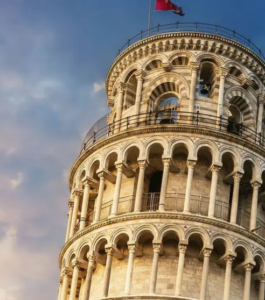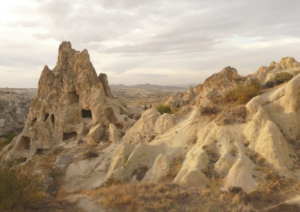The Wonders of the World: A Journey Through Time and Culture
The Seven Wonders of the World have fascinated humanity for centuries, showcasing the extraordinary achievements of ancient civilizations. These wonders, spanning different cultures and periods, highlight human ingenuity, artistic creativity, and the desire to build lasting legacies. This article explores each of the Seven Wonders, diving into their history, significance, and enduring impact on our world.
The Great Pyramid of Giza
Historical Significance
The Great Pyramid of Giza, the only surviving wonder of the original Seven Wonders of the Ancient World, stands as a testament to ancient Egyptian engineering prowess. Constructed around 2580–2560 BCE during the Fourth Dynasty of the Old Kingdom of Egypt, it was built as a tomb for the Pharaoh Khufu (Cheops). The pyramid’s construction involved massive limestone blocks, each weighing several tons, and its precision remains a marvel to this day.
Architectural Marvel
Standing at an original height of 146.6 meters (481 feet), the Great Pyramid was the tallest man-made structure in the world for over 3,800 years. The pyramid’s design and alignment with the cardinal points are highly precise, demonstrating advanced understanding of mathematics and astronomy. The interior chambers, including the King’s Chamber and the Grand Gallery, reflect sophisticated engineering techniques that have puzzled archaeologists for centuries.
Cultural Impact
The Great Pyramid has not only served as a monumental tomb but also as a cultural symbol of ancient Egyptian civilization. It has inspired countless stories, theories, and research, contributing to our understanding of ancient Egyptian culture, religion, and technology. Today, it continues to attract millions of tourists and scholars, symbolizing the enduring legacy of the ancient world.
The Hanging Gardens of Babylon
Myth or Reality?
The Hanging Gardens of Babylon are shrouded in mystery, with debates over their existence persisting among historians. According to ancient texts, these gardens were built by King Nebuchadnezzar II around 600 BCE to please his homesick wife, Amytis. Descriptions of the gardens depict a remarkable feat of engineering, with lush greenery and cascading terraces.
Engineering Feats
If the Hanging Gardens did exist, they would have required advanced irrigation systems to support the lush vegetation in the arid climate of Babylon (modern-day Iraq). Ancient writers like Strabo and Philo of Byzantium described complex mechanisms, such as screw pumps, to lift water from the Euphrates River to the gardens’ higher levels. These accounts highlight the ingenuity and resourcefulness of Babylonian engineers.
Cultural and Historical Influence
The Hanging Gardens have captured the imagination of people for centuries, symbolizing the intersection of nature and human ingenuity. Whether myth or reality, they represent the human desire to create beauty and harmony in the built environment. The gardens have inspired countless artistic representations and continue to be a subject of fascination in the study of ancient Mesopotamian culture.
The Statue of Zeus at Olympia
A Divine Monument
The Statue of Zeus at Olympia was a giant seated figure of the god Zeus, created by the sculptor Phidias around 435 BCE. Located in the Temple of Zeus in Olympia, Greece, this wonder was constructed to honor the king of the Greek gods and was a symbol of Greek religious devotion and artistic excellence.
Artistic Brilliance
Standing at approximately 12 meters (39 feet) tall, the statue was made of ivory and gold-plated bronze, showcasing the opulence and skill of ancient Greek craftsmanship. Zeus was depicted holding a scepter topped with an eagle in one hand and a statue of Nike, the goddess of victory, in the other. The statue’s intricate details and grandeur left a lasting impression on all who beheld it.
Legacy and Destruction
The Statue of Zeus stood for over eight centuries before being destroyed, possibly in a fire or earthquake, around the 5th century CE. Despite its loss, the statue’s legacy endures through ancient descriptions and Roman copies. It remains a powerful symbol of Greek artistic achievement and religious culture, influencing subsequent generations of artists and sculptors.
The Temple of Artemis at Ephesus
Architectural Grandeur
The Temple of Artemis at Ephesus, located in modern-day Turkey, was one of the largest and most elaborate temples of the ancient world. Built around 550 BCE, it was dedicated to Artemis, the Greek goddess of the hunt, wilderness, and fertility. The temple was renowned for its grand scale and decorative sculptures.
Construction and Features
Constructed primarily of marble, the temple measured approximately 115 meters (377 feet) long and 55 meters (180 feet) wide, with 127 columns standing 18 meters (59 feet) tall. These columns and the intricate friezes that adorned the temple were masterpieces of ancient Greek architecture. The temple served not only as a religious center but also as a marketplace and cultural hub.
Destruction and Legacy
The Temple of Artemis was destroyed and rebuilt multiple times due to various events, including arson by Herostratus in 356 BCE and later by Goths in 262 CE. Despite its eventual ruin, the temple’s influence persisted through its architectural innovations and cultural significance. Today, its remains continue to attract tourists and scholars, offering insights into ancient Greek religious practices and architectural advancements.
The Mausoleum at Halicarnassus
A Tomb of Grandeur
The Mausoleum at Halicarnassus, built between 353 and 350 BCE in present-day Bodrum, Turkey, was the tomb of Mausolus, a satrap of the Persian Empire, and his wife, Artemisia II. Designed by Greek architects Satyros and Pythius, this monumental tomb combined Greek, Egyptian, and Lycian architectural styles.
Design and Structure
The Mausoleum stood approximately 45 meters (148 feet) high, featuring a large rectangular base with a stepped pyramid roof. The structure was adorned with intricate sculptures and reliefs created by four prominent Greek sculptors: Scopas, Leochares, Bryaxis, and Timotheus. These artistic decorations depicted scenes of Greek mythology and showcased the highest levels of Greek artistry.
Historical Significance
The Mausoleum at Halicarnassus was considered one of the most beautiful and elaborate tombs of the ancient world, influencing the design of future monumental tombs, including the modern term “mausoleum.” Its legacy endures through ancient descriptions and artistic reconstructions, highlighting the blend of different cultural influences in ancient architecture.
The Colossus of Rhodes
Symbol of Victory
The Colossus of Rhodes, erected between 292 and 280 BCE, was a giant statue of the sun god Helios, standing approximately 33 meters (108 feet) high. It was built to celebrate Rhodes’ victory over the ruler of Cyprus, Antigonus I Monophthalmus. The statue was a symbol of unity and strength for the people of Rhodes.
Engineering Marvel
Constructed by the sculptor Chares of Lindos, the Colossus was made of bronze plates over an iron framework. It stood at the entrance of the harbor of Rhodes, making it a beacon for incoming ships. The statue’s construction required innovative techniques to manage its immense size and weight, demonstrating the advanced engineering skills of the Hellenistic period.
Destruction and Memory
The Colossus of Rhodes stood for only 54 years before being toppled by an earthquake in 226 BCE. Although it was never rebuilt, the statue’s memory persisted as a symbol of Hellenistic engineering and artistic achievement. Today, it is remembered as one of the most impressive feats of ancient craftsmanship, inspiring modern efforts to recreate similar monumental statues.
The Lighthouse of Alexandria
Beacon of the Ancient World
The Lighthouse of Alexandria, also known as the Pharos of Alexandria, was built on the small island of Pharos between 280 and 247 BCE during the reign of Ptolemy II Philadelphus. Standing approximately 100 meters (330 feet) tall, it was one of the tallest man-made structures of the ancient world and served as a guiding beacon for sailors navigating the treacherous waters of the Nile Delta.
Architectural and Functional Design
Designed by the Greek architect Sostratus of Cnidus, the lighthouse featured three tiers: a square base, a cylindrical center, and a smaller cylindrical top where a fire burned at night. This fire was reflected by a polished bronze mirror, projecting light far out to sea. The lighthouse was both an architectural marvel and a critical navigational aid, showcasing the fusion of form and function.
Legacy and Influence
The Lighthouse of Alexandria stood for over a millennium before being severely damaged by a series of earthquakes between the 10th and 14th centuries. Its legacy endures through descriptions by ancient writers and its influence on subsequent lighthouse designs. The Pharos became synonymous with lighthouses, and its innovative design set the standard for future maritime navigation aids.
Conclusion
The Seven Wonders of the World represent the pinnacle of ancient human achievement, reflecting the diverse cultures, technological advancements, and artistic creativity of their times. Each wonder tells a unique story of innovation, dedication, and the desire to create lasting legacies. By exploring these wonders, we gain a deeper appreciation for the ingenuity and spirit of our ancestors, inspiring us to continue pushing the boundaries of what is possible in our own time.






